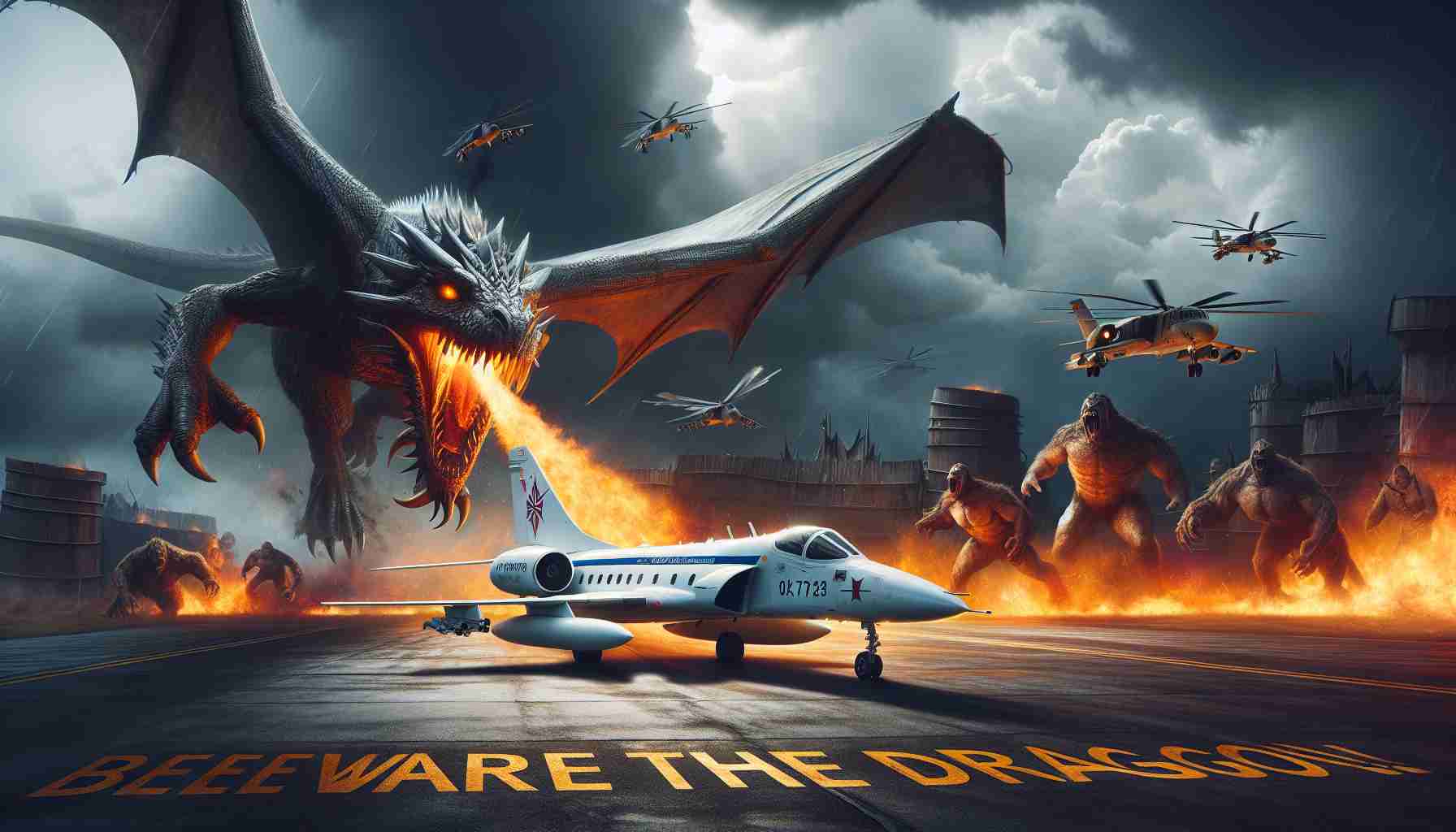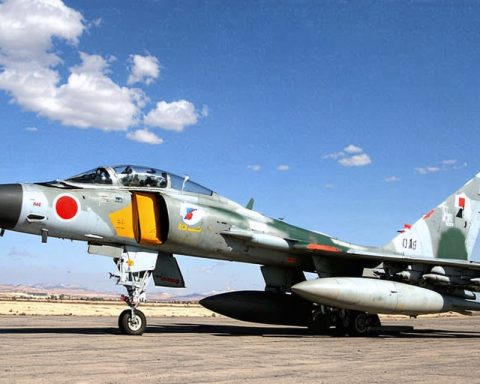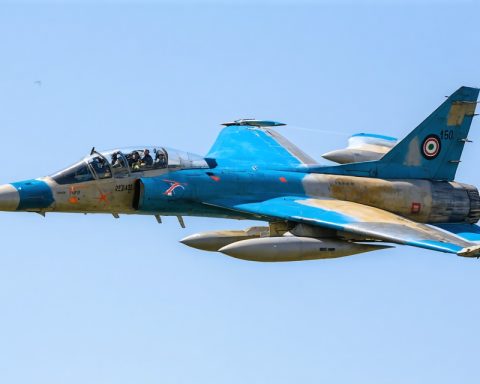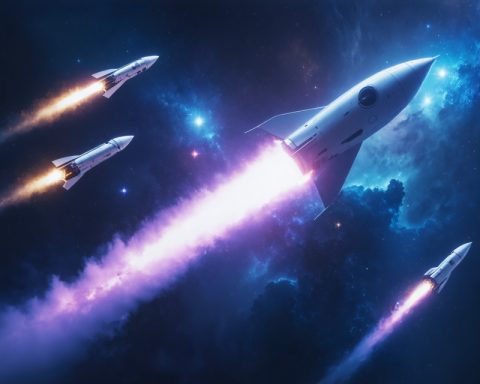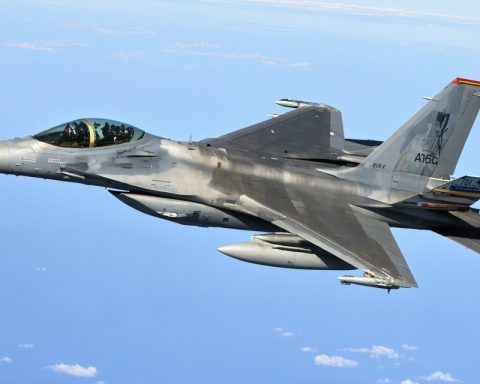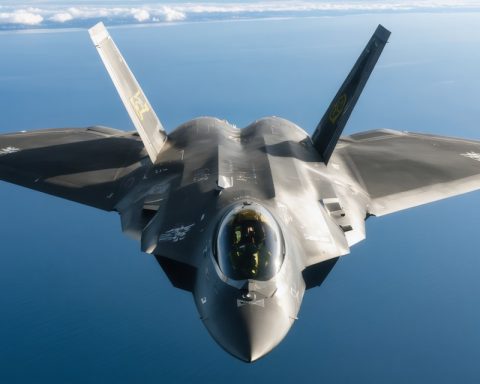Unbelievable Animation Features Russian Jet and a Dragon Defending a City
In an unexpected twist of creativity, a promotional video from “Rosoboronexport” showcases a Russian Su-57 jet partnering with a mythical Chinese dragon to shield a city from airborne threats. Released on the company’s official Telegram channel, the video portrays a battle scene where helicopters, drones, and aircraft descend upon the urban area, only to be thwarted by the aerial duo.
Initially, the dragon tackles helicopters, bearing a striking resemblance to American Bell 360 Invictus models. As the action intensifies, the narrative introduces larger adversaries, such as drones reminiscent of the Bayraktar TB2—famous for their use in various military operations, including those involving Ukraine.
Despite the seeming hopelessness of the dragon’s solo fight, salvation arrives in the form of the advanced Su-57 jets. The jets engage in dramatic dogfights, maneuvering past missiles in a style that recalls cinematic moments from films like “Top Gun: Maverick”. This display captured the attention of military analyst Igal Levin, who noted the innovative approach.
Designed for a Chinese aviation exhibition, Airshow China 2024, the video coincides with Russia’s attempt to market the Su-57. However, attendees raised concerns regarding the aircraft’s assembly quality and its alignment with fifth-generation fighter expectations.
Though Russia announced securing sales for the Su-57, details remain vague, with potential buyers and quantities undisclosed. Previous media speculation about international sales deals has yet to see confirmation, and past collaborations, such as with India, ended contentiously in 2018.
Dragons and Jets Unite: The Future of Warfare or a Flight of Fancy?
In recent times, an unprecedented video released by Russia’s “Rosoboronexport” showcases a bizarre yet intriguing display of military might and mythological imagination. The video depicts a Russian Su-57 jet joining forces with a mythical Chinese dragon to protect a city from a variety of airborne threats. Beyond the spectacle lies a deeper narrative about the future of warfare, the merging of modern technology with age-old myths, and the unexpected directions military marketing might take.
Unleashing the Power of Myth in Modern Warfare
The use of a dragon—a symbol deeply rooted in Chinese folklore—alongside advanced military technology is a striking choice that raises questions about cultural diplomacy and the narratives we construct around contemporary defense strategies. Such imagery might aim to tap into cultural symbols that help convey power and protection, potentially reaching international markets where these symbols resonate. But what does this fusion of myth and machinery suggest about future military engagements?
What Are the Technological Implications?
The emergence of jet-dragon partnerships, although currently fantastical, indirectly prompts us to reflect on the potential for integrating advanced AI and autonomous capabilities in defense systems. If mythical creatures symbolize extraordinary capabilities beyond human technology, the Su-57 jets in the video might metaphorically suggest a future where human and artificial systems harmonize seamlessly.
Advancements in AI promise greater coordination and adaptability in defense systems, much like the teamwork depicted between the jet and dragon. Such advancements could redefine aerial combat, surveillance, and defense strategies. However, these developments are not without their challenges.
Advantages and Disadvantages of Upcoming Technologies
The main advantage of integrating new technologies like AI in military operations is increased precision and efficiency. Automated systems can process data faster, minimize human error, and operate under conditions that might be perilous for human pilots. This could lead to more strategic deployment of resources and timely responses to threats.
However, the disadvantage lies in ethical concerns and the potential loss of human control. Questions about autonomous weapons systems deciding life and death in battlefields pose significant moral dilemmas. Moreover, reliance on technology could make systems vulnerable to cyber-attacks, leading to potentially catastrophic failures.
The Controversy of Military Marketing
From the perspective of marketing, this video introduces an unusual blend of fiction and functionality. It reflects an emerging trend where defense contractors engage via creative storytelling, perhaps attempting to weave emotional resonance into strategy presentations. This tactic could succeed in gaining attention, but it might also draw criticism for trivializing serious defense issues.
The Future: Speculative or Actionable?
Ultimately, the portrayal of dragons and jets working together serves as a thought-provoking commentary on the military-industrial complex and its future trajectory. As we advance technologically, it’s imperative to ask: Will we see more of such imaginative presentations in official capacities, and how will they shape public perception of military capabilities?
For further exploration of aerospace advancements and cultural diplomacy implications, you might visit Lockheed Martin or delve into defense policy analyses with resources like RAND Corporation.
